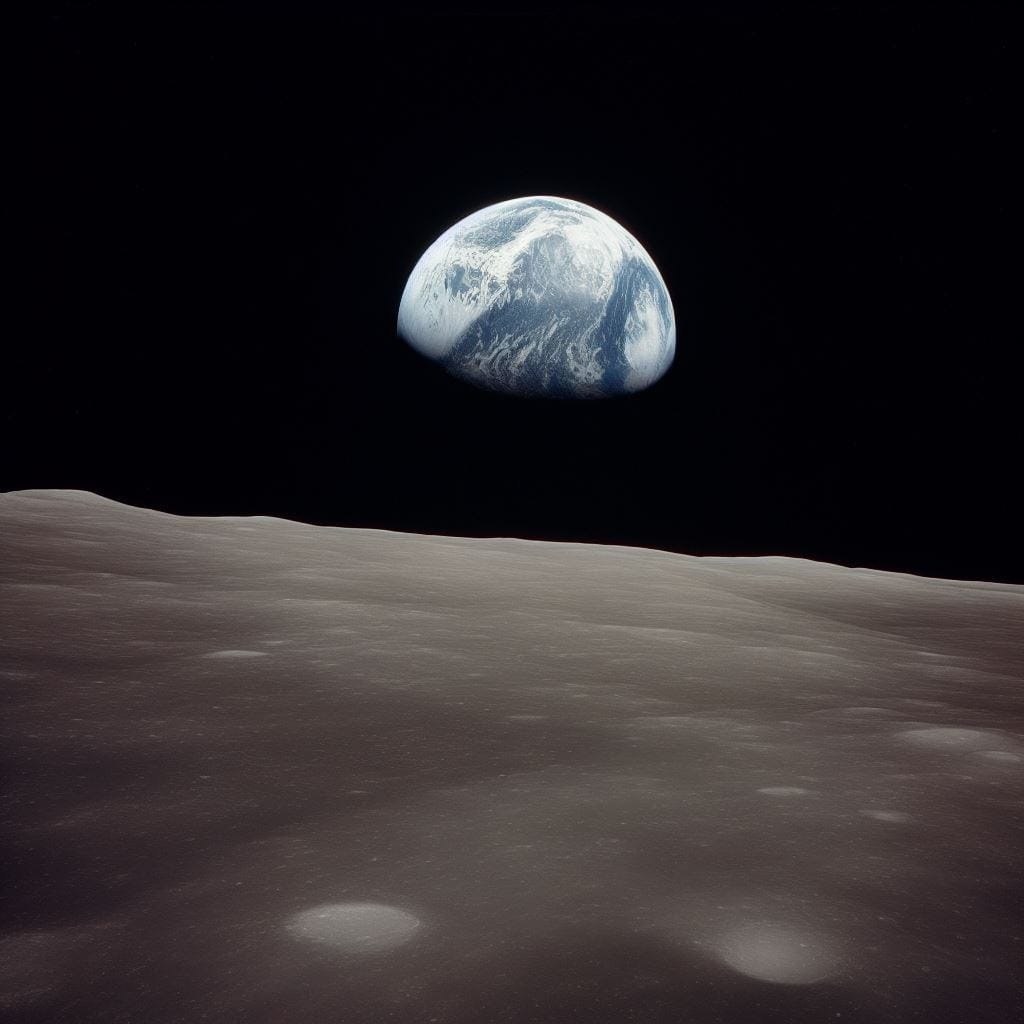How NASA's Odysseus Mission Is Kicking Off a Lunar Land Grab
The US returns to the Moon, driven by profit as much as science. NASA and private companies seek valuable minerals and a path to Mars. A lunar base could become a cosmic factory, a new frontier in the space race fueled by both competition and collaboration.

The moon, our steady celestial companion, has shone the same silvery light down on Earth for eons. But its familiar face hides a treasure trove – the seeds of a new era of space exploration and a potential bonanza of resources that could revolutionize technology back on Earth.
This is the vision behind the Odysseus mission, a collaboration between NASA and the private space company Intuitive Machines. Their goal is audacious: to set up a lunar base camp. They want a permanent scientific outpost for studying the solar system, but more importantly, they want to claim a stake in the vast mineral wealth and precious resources of our enigmatic neighbor.
Dr. Alejandro Farah Simón, Secretary of Education and Dissemination of the University Space Program at UNAM, is a man with stars in his eyes and the cold, hard facts of resource scarcity at his fingertips. “The moon is a treasure trove,” he proclaims. “Rare earth elements – the backbone of our cellphones and computers – are, well, rare on Earth. Then there's Helium-3, an isotope that could pave the way for cleaner nuclear energy – not so plentiful on our planet either.”
The push for lunar resources marks a fundamental shift. Gone are the days of the Apollo missions, fueled by Cold War rivalry. Space exploration has a new bottom line: profit.
The Lunar Klondike
The moon isn't just a scientific curiosity anymore. It's ripe for exploitation, a vast storehouse of raw materials waiting to be mined and refined into technological wonders. And it's not just about precious minerals. Dr. Farah Simón talks about lunar ice found in shadowed craters near the poles. To him, this ice isn't just a scientific find; it's rocket fuel, it's an industrial solvent, it's the lifeblood of a lunar colony.
Think of the moon base as the ultimate off-planet gas station. Why drag all your fuel and supplies for a Mars mission from Earth, with its pesky gravity well? With the moon on the itinerary, journeys further into the cosmos become far more cost-efficient.
It's a vision straight out of science fiction: 3D printers humming on the lunar surface, manufacturing spare parts and tools on-demand. The designs beamed straight from Earth – no more shipping containers of bolts and screws across millions of miles. “It doesn't sound far-fetched,” says Dr. Farah Simón. The technology is maturing, but crucially, so is the economic incentive. Finally, the business case for space exploration adds up.
SpaceX and the New Pioneers
The Odysseus mission wasn't just a NASA show. While NASA's experience was invaluable, the lander that touched down on the lunar surface was built by a private company, Intuitive Machines. It's the dawn of a new era in space, where government agencies and corporations jostle for position. Farah Simón sees parallels with SpaceX, another private company that's turned the space industry on its head. NASA retains its role as a guiding hand, but these days it writes the checks – private enterprise handles the heavy lifting.
The Odysseus mission is a bold step, that much is certain. But what of the risks and the potential downsides? Space ethicists might well have concerns about the commercialization of celestial bodies. The echoes of unregulated resource extraction on Earth, with its scars of environmental damage, should give us pause. There's the potential too, for fierce competition, where lunar territories become geopolitical flashpoints.
Yet, the lure of the moon remains strong. Odysseus marks the return of the USA to the lunar surface after a decades-long hiatus. They won't be alone long. Other spacefaring nations, and even other private companies, will soon have the moon's glow in their eyes. The lunar land grab has begun, and a new chapter in human history is being written right before our eyes.
The Moon Buggy That Could
The great space race, we're often told, is in our rearview mirror. Nations once pitted against each other now collaborate across borders. The grand drama of rockets and flags has been replaced by the quiet hum of scientific discovery.
But make no mistake—that quiet hum masks a relentless, irrepressible human urge to poke and prod at the vast unknown. The Moon, our closest celestial companion, has never lost its allure. In fact, it's getting a bit crowded up there as missions like Odysseus push the limits of lunar technology.
Odysseus is a curious bird. Boxy with solar panels that fold out like awkward wings, this lunar lander is the brainchild of a private company working with various space agencies. While its mission is scientific, its journey has been anything but smooth. Think of it like a high-tech moon buggy. Every lander sent to the Moon tests new technology, learns from old ones—they're all like building blocks.
Odysseus's building blocks, however, came with a twist. Solar power is a proven technology, essential for deep space missions. But the Moon has a way of playing tricks with sunlight. “Those panels, they're vital,” Simón stressed, “If they don't unfold right, no battery charge, mission over. Even if they open, they need the perfect angle to catch those rays.”
Luckily, Odysseus's panels did their job. For seven days, its array of instruments poked at the lunar surface, eyes wide open for signs of what might await future missions—and perhaps even future lunar settlers.

Odysseus and the Science of Lunar Landings
One of its more unusual tools is a laser reflector. Imagine a super-shiny space disco ball, but instead of glitter, it's meticulously designed to bounce laser light back to Earth with unparalleled precision. “With that reflector,” Simón explains, “we map tiny variations in the Moon's distance. It's like smoothing the road for those big Artemis landings.”
The Artemis Program, with its goals of long-term lunar presence, relies on missions like Odysseus to iron out the kinks in our spacefaring tech. And one of the biggest kinks is a curious beast named regolith.
The Regolith is the Moon's worst party trick. Looks like dust, but it's made of super sharp, super clingy particles. It messes with electronics, clogs up machinery… think of it like the world's most annoying glitter. Odysseus's grainy, low-resolution photos focus on the lunar surface, seeking clues to help future astronauts and rovers work around this shimmering menace.
But perhaps the most significant quirk of Odysseus is the story behind it. Farah Simón sees space exploration pieced together by many hands. “Sure, there's still competition between nations,” he admits. “But the bigger picture is a melting pot—governments, private companies, scientists worldwide all sharing a little bit of the pie.”
There's also a more profound message: Out there, it's mind-blowing and scary. It makes you realize how tiny we are, but also… how special. We've got to keep looking, keep learning, keep pushing, because if not… then what's the point? The point is, we have to protect this beautiful, weird, little marble of ours.
So, the next time you glance at the Moon, remember it’s not just a pretty face. It is a testing ground for quirky little landers and shiny space reflectors, as well as the dreams of scientists like Farah Simón. The space race might have changed its tune, but behind the collaborative hum, humanity's drive to explore burns as bright as ever.




